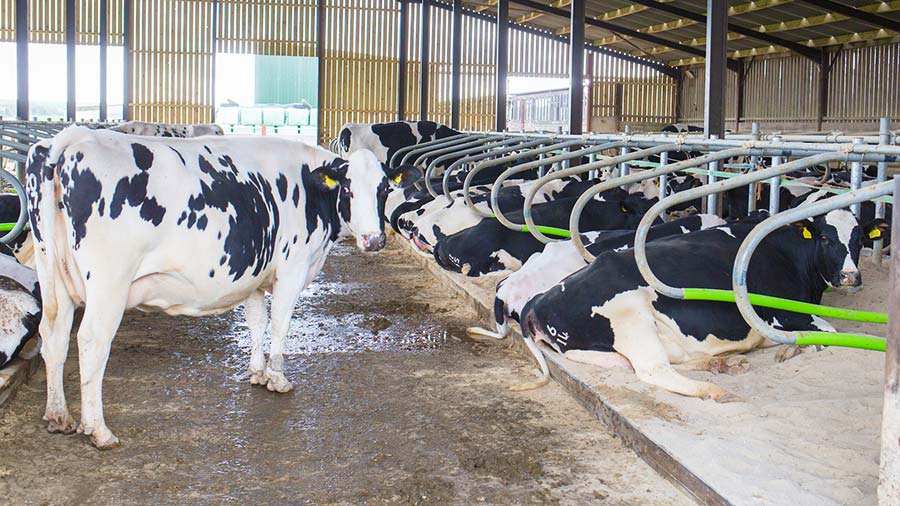Trial shows bedding treatment lowers ammonia emissions
 © Tim Scrivener
© Tim Scrivener Positive bacterial biofilms could be part of the toolbox used to meet government targets to reduce ammonia emissions from agriculture by 16% by 2030.
Biofilms behave differently to free-flowing microbes. They are a complex community of microbes that can grow and communicate with each other and are surrounded by “slime”. They can be made up of positive and negative bacteria.
By treating bedding material with the right bacteria, it is possible to establish a new biological “equilibrium”, according to Lientjie Colahan, animal environment products manager at Lallemand Animal Nutrition.
For example, a community of favourable microbes could exclude other ammonia (NH3) producing microbes.
At the same time, other microbes could be introduced that would use nitrogen for their own metabolism so that it couldn’t be used for ammonia production.
See also: Plasma technology reduces emissions in slurry by 90%
Trial
In a Finnish trial, Manure PRO – a bedding conditioner containing enzymes, lactic acid bacteria and bacillus bacteria – was applied to cubicle bedding at 1g/sq m a week for one week and then 0.5g/sq m for the remainder of the two-month trial.
(It was also applied at 1kg for slurry produced from 100 cows a month. In slurry, microbes acted more like “floating bacteria” than a biofilm.)
The bedding conditioner was used in one shed, while another identical shed didn’t receive any treatment. Both were closed buildings with active ventilation.
In the control building, turning the ventilation on reduced NH3 levels, while in the treatment building, NH3 levels were lower when the ventilation was on or off, compared with the control (see “Ammonia production from shed treated with Manure PRO and one not treated” below).
The study shows that good ventilation is very important for influencing ammonia, says Ms Colahan, but also that microbes can reduce the ammonia production in the first place.
In the UK, where buildings are open, the impact might not be as big. However, steps could still be taken to improve ventilation, such as raising the ridge and avoiding Yorkshire boarding all the way round the building.
Lallemand’s EazyBed PRO is a powder version of Manure PRO for the UK market.
Ammonia production from a shed treated with Manure PRO and one not treated |
||
|
|
Ventilation off |
Ventilation on |
|
Control |
11ppm |
9ppm |
|
Treatment |
7ppm |
5ppm |
Lientjie Colahan was speaking at the TotalDairy conference on 10-11 November 2021.
